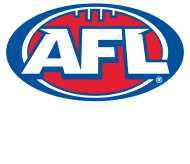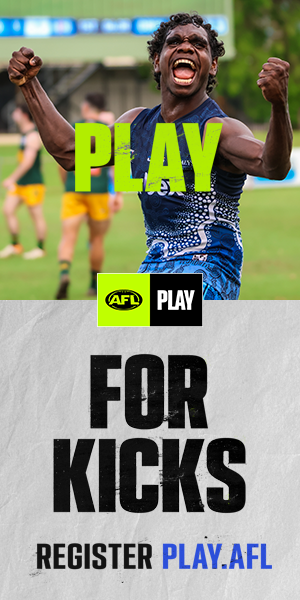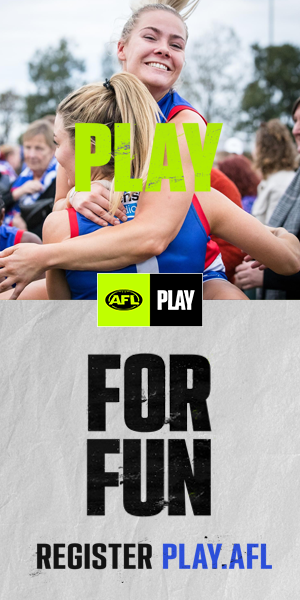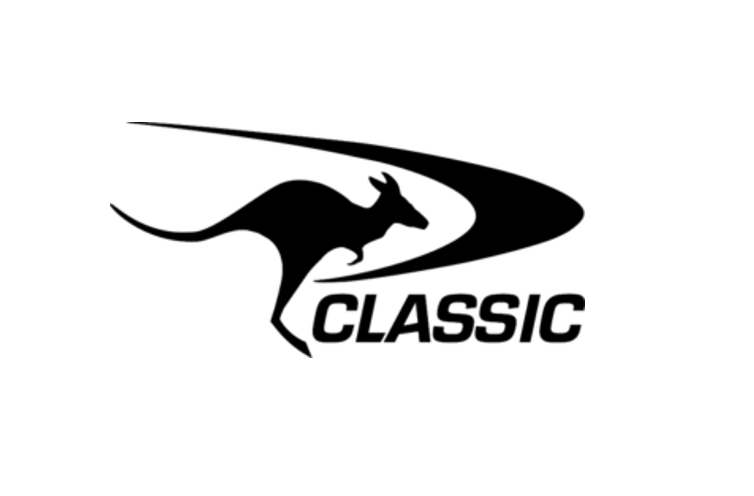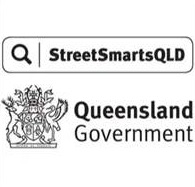There have been dozens of southern recruits to Queensland football who have been pivotal to the game’s growth over the past 40 years, but as important as any was a Melbourne journalist whose first love was horses and was a devoted Sydney Swans man from age three – Brian Burke.
Officially, he was ‘recruited’ by Rupert Murdoch from the Townsville Bulletin in 1982 and ‘played’ at the Daily Sun, The Australian and The Courier-Mail for 31 years. A wonderful story-teller, with a memory for detail, he was ‘hard at it’ when it came to a big story and had 10 years as ‘captain’ in a career admired by friend and foe.
A man of great sporting knowledge and journalistic expertise, with a special AFL passion, he was a critical ally of the national code from his early years in Queensland through to the overwhelming popularity of the 2000s.
Melbourne-born and bred, Burke started in journalism as a cadet at what is now the Herald Sun in 1974, and as he pondered a wonderful career quickly slipped into story mode. “They were offering 12 cadetships and I was #13. But I was lucky – the girl who got seven A’s at school was #1 on the list but didn’t take kindly to being told to do the shipping notes on day one and left to join “Willesee” so I got a start,” he said. “I was the first AFL sub.”
It wasn’t his first option. Brother to apprentice jockey Martin Burke, he worked at the stables of leading Melbourne horse trainer Tommy Hughes before and after school, and on holidays, and when they offered vocational sessions in his later years at school he told the teacher he wanted to be a racing steward. “He looked at me blankly and said ‘that’s nice but we’ve got no idea how we can help you’, so I did the next best thing and wrote about it.”
He did five years general news, including 15 months as the Queensland correspondent for the Melbourne Sun and the Sydney Morning Herald, based out of The Courier Mail building at Bowen Hills, before returning to Melbourne to write AFL and tennis for The Sun.
In 1981 he and wife Anne Groom, daughter of Brisbane Telegraph deputy editor the late Neil Groom, joined the Townsville Daily Bulletin. He was the racing and trotting editor, and Anne was the women’s editor. All was going well until an historic moment in Queensland journalism when Murdoch announced he was starting a new paper in Brisbane – The Daily Sun – August 1982.
Burke was one of the key signings for a publication which promised to focus heavily on sport and did exactly that. “It was a great time for sport in Queensland – we devoted a lot of space to all sports, and it forced The Courier-Mail to do likewise so everyone won,” he said.
From 1982-86 the man they called ‘Bomber’ covered the QAFL, among other sports, and in his first year struck a telling blow for the code when he recruited new Mayne captain-coach Mick ‘The Galloping Gasometer’ Nolan to write a weekly column. It was big news in a traditional rugby league town. And for the first time Brisbane had three Australian rules writers – Burke, Peter Blucher at The Courier-Mail and David Argus at The Telegraph – as Nolan’s Tigers won the QAFL flag.
For five years Burke and Blucher were like ‘Bill and Ben’. Strictly speaking they were rivals, working in the same news cycle, but when it came to representative football, which was starting to take off under new QAFL General Manager Ken Murphy, it was a time of shared passion.
As Queensland won the 1983-84-85 interstate series against NSW, ACT and Tasmania in a campaign that led directly to the birth of the Brisbane Bears in 1987, the ‘poison pen pair’ travelled as part of the team. On planes, in hotels and on team buses, they were like the extra emergencies who relished being part of the code’s popularity explosion.
“It was a time when a lot of ex-AFL players were coming to Brisbane – Nolan, Frank Gumbleton, Norm Dare, John Blair, Ronnie Wearmouth, Mike Woolnough, Alex Jesaulenko, John Rantall, Barry Grinter, Pat Wellington, Kevin O’Keeffe, Terry O’Neill, and the game took off,” he said.
He remembers fondly the Queensland team’s big selection call at full forward in 1984 for the deciding interstate game against Tasmania in Hobart. David Pie had kicked eight goals in the preceding game against the ACT in Canberra but the Maroons lost, and the selectors took a punt on a Coorparoo teenager named Jason Dunstall.
“It was a big call but it was right,” said Burke, who recalled a conversation with Nolan, captain of the state side in 1983 and key ruckman and assistant coach to Norm Dare in 1984. “I said to Mick ‘are you sure?’ and he said ‘don’t worry Cob – he’s got the safest hands in Queensland’. And he did.”
Burke covered the birth of the Bears in 1987 and travelled with them as he had done the Queensland side, until an ‘opposition club’ came knocking. In 1988 he began a 15-year stint as Queensland sports reporter for The Australian.
He soon found himself at loggerheads with club chairman Paul Cronin and deputy-chairman/owner Christopher Skase over their decision to make the club’s permanent home at Carrara in defiance of a pre-license commitment to base the club in Brisbane, with those at League headquarters who allowed it to happen.
He led a concerted media campaign in The Australian, and when Skase went broke and fled the country in late 1989, he continued the pressure on the powers-that-be to get the club back to Brisbane. Nobody was happier when Bears CEO Andrew Ireland was able to convince Gold Coast businessman and new owner Reuben Pelerman to move the Bears to the Gabba in 1993.
He covered the club’s growth on and off the field and the 1996 merger with Fitzroy to form the Brisbane Lions, and was as happy as any Queenslander when they won the 2001 flag. Almost. There was one sticking point – his life-long Swans allegiance.
“It was 1958 and I was three. One winter’s day I was at my mate’s place (his family had the only TV in the street) watching the last quarter of the match of the day. It was South Melbourne v Melbourne. South won a close one over the reigning premiers and my mate’s dad jumped out of his chair and said ‘I want you to swear on the bible that you’ll always barrack for the Swans’. And so I did.”
Ireland, a former Collingwood AFL player who had played under Nolan in Mayne’s 1982 flag, was Lions CEO at the time of their historic first flag and accepted Burke’s red and white allegiance – only because he’d been so good to the code.
“Brian was incredibly important to Queensland football as it grew through the 1980’s. He was very passionate about the code and a strong advocate for the QAFL (including his Mayne Tigers) and was incredibly invested in the state teams. Once the Bears license was issued he and Peter Blucher led the public push to fight the move to base the Bears at Carrara and assisted greatly in shining a constant focus and pressure to get the club back to Brisbane,” Ireland said.
“Brian was incredibly proud when Brisbane won the 2001-02-03 premierships, given the long road from Carrara. As a passionate Swans supporter he understood the importance of success for teams located in the non-traditional markets and so was even more pleased when his Swans broke their 72-year premiership drought in 2005.”
In 2003 Burke was ‘recruited’ again, this time to The Courier-Mail as Sports Editor. Through to his retirement in 2013, he was always happy to give a good story a good run (and perhaps a little more). He was always fair and objective, but was always an AFL advocate too.
There were countless highlights along the way, including the 1982 Brisbane Commonwealth Games, the 2000 Sydney Olympics and other huge passions including tennis, golf, and racing. While rugby league was the dominant winter sport, Burke ensured all sport – particularly AFL – got a fair go. He was particularly chuffed to hire those “safe hands” of Jason Dunstall as a columnist, and later was first to recognise the media appeal of rising Lions star Jonathan Brown.
But after the Lions’ hat-trick of 2001-02-03 and eight Queensland Rugby League State of Origin series wins in a row, he retired in 2013. He bought a farm at Cooroibah, near Noosa-Tewantin, and went back to his first love – horses, becoming a small-time breeder.
He even had success in the sport of kings, breeding three to race for three winners, most noticeably Soxagon, who won 10 races and was placed eight times in 30 starts, including a memorable win in the 2022 BRC Sprint, a prestigious Group Three race at Eagle Farm, beating Alligator Blood. Soxagon was also beaten in a photo finish in the 2021 Magic Millions Cup.
In 2019 he and Anne, parents to four children and grandparents to six, moved back to Brisbane. When he’s not on baby-sitting duties he’s working on his latest passion – horticulture – and follows anything and everything to do with sport, always keeping a close watch on the footy and he does so with the enormous gratitude of all things AFL.
